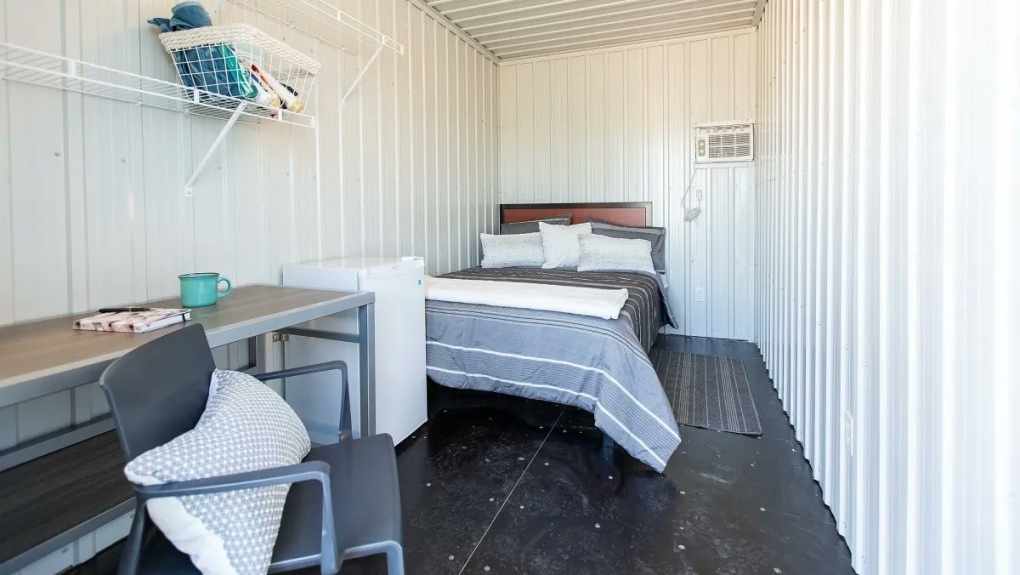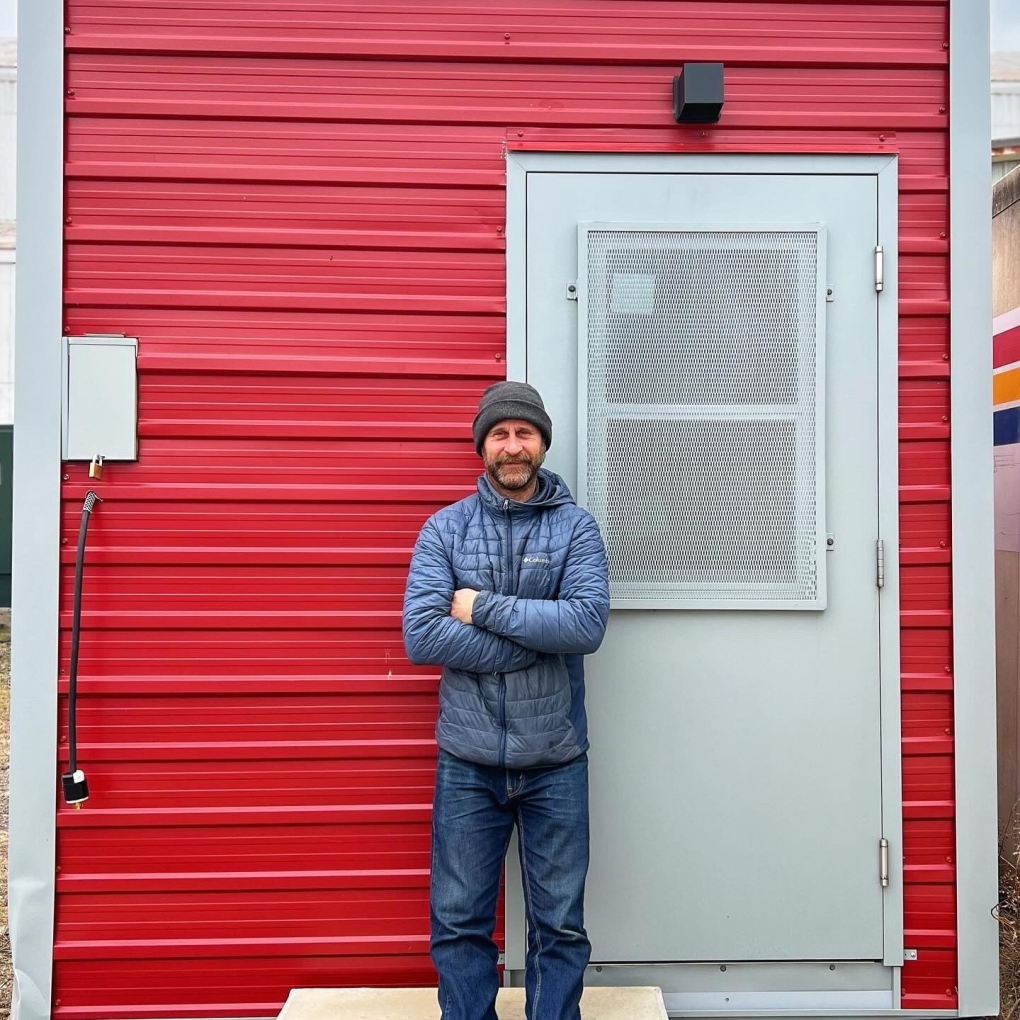Cabins are popping up in communities across Canada as a way to provide shelter from the elements to those experiencing homelessness. But some say they are not a permanent solution to getting people off the streets.
Advocates, businesses and organizations across Canada are trying to figure out the best way to help the homeless. especially as temperatures across the country drop to unsafe levels.
One possible solution is tiny shelters, many of which look like a single room with just a bed, or a small-scale cabin with a separate living room and bathroom.
Examples of communities testing these types of shelters have been created in New Brunswick, ontario and British Columbiaamong other places in Canada, all with the goal of helping the homeless.
In addition to differing in design from the often overcrowded shelters, these small cabins tend to be on the outskirts of cities and are grouped together, resembling a neighborhood.
Although the buildings are effective in getting people out of the elements, according to some experts, they are not the permanent solution to widespread homelessness.
SHELTERS IN ONTARIO
Now Housing is an Ontario construction company dedicated to building shelters from shipping containers. The company partners with housing organizations and municipalities to offer these temporary solutions.
The cabins he builds measure four meters by 2.4 meters and have a bed, a dresser, a desk and a mini refrigerator.
They are designed to meet provincial building codes and the high ceilings create the illusion of a larger space, Housing Now spokesperson Chris Pursel said in an interview with CTVNews.ca.
“Things are only getting worse,” Pursel said of Canada’s housing and homelessness crisis.

Now Housing has completed two communities, each consisting of 50 temporary private cabins, in the Ontario city of Peterborough and Waterloo Region.
“The one in Peterborough is located next to an existing shelter building,” Pursel said. “We also put a 40-foot (12-meter) container on site that has toilets and a shower, so there’s additional support that way.”
The shelters were born out of necessity.
Previously, people lived in more than 50 tents in an area across the street, Pursel said. The cabins, with everything included, cost Now Housing $21,500 to build, the company said.
While the Peterborough cottage community was built near other facilities, the Waterloo project is further out in the township, Pursel said.
Since the location is not close to bathrooms or other supports, Now Housing created a 12-by-14-meter community center, equipped with laundry, bathrooms and gathering spaces, for use by the cabin’s residents.
Pursel said the location issue is one of the challenges these projects face.
It is not because of the space that the booths occupy, but because of the public’s reaction.
Pursel said he has “more than once” heard complaints from residents about how small shelter communities could be problematic for neighborhoods.
THE IDEA OF A SMALL REFUGE SPREADS
Mark Wilson doesn’t see Now Housing communities that way.
Bring Down the House housing advocate in St. John’s, NL, said he finds the cabins provide “a lot of flexibility” at a “very low cost.”
Wilson told CTVNews.ca in an interview that he used to be a caseworker for a member of Parliament, meaning he helped deal with constituents’ problems and guide them toward solutions.
In that line of work, he said, he was able to see the gaps in government systems, especially during the pandemic.
Then, in October 2023, about 30 people set up a camp two dozen tents in a large field across the Newfoundland and Labrador provincial legislature.
People who live there said they hoped their presence there would prompt faster action by the government to resolve the province’s homeless crisis.

Wanting to see those people off the streets and safe, Wilson looked elsewhere in the country for solutions and came across Now Housing and its cottage project in Waterloo.
With the help of other organizations in St. John’s, Wilson and the team behind Bring Down the House hope to raise enough money to purchase one of Now Housing’s cabins.
Once the organization purchases the cabin, it will be “toured on the back of a trailer” to “generate conversations” in municipalities in the region.
Wilson hopes to find “local champions” who see the cabins as a viable option to get people off the streets, thereby securing support and funding to build a cabin community.
“If we are able to quickly implement that kind of idea, maybe there is a way to prevent the crisis from getting worse here,” Wilson said.
PERMANENT HOUSING IS STILL NEEDED
Now Housing huts are not a permanent solution, according to Tim Richter, founder and president of the Canadian Alliance to End Homelessness.
“Tiny houses are people responding to the housing crisis and trying to find new ways to solve the problem, which is fantastic,” he told CTVNews.ca in an interview. “But we must be careful not to replicate what actually happens with food banks.”
Food banks do not exist because there is a lack of food, but because there is poverty, he said. Richter said both aim to solve problems in the short term, but don’t get to the root.
“We don’t want to just create a bunch of emergency responses,” he said.

To address the homelessness crisis, Richter said permanent housing must offer safety, quality, options and the ability to stay long-term.
Richter said it’s important to note that the people living in these temporary cabins are still “homeless” and in “transitional housing.”
More permanent housing options include long-term affordable rentals and housing with low or no costs to the person who lives in it.
“I think it’s really important for us to focus on creating that permanent, lasting, long-term solution rather than chaining together a series of responses to the crisis,” he said.
